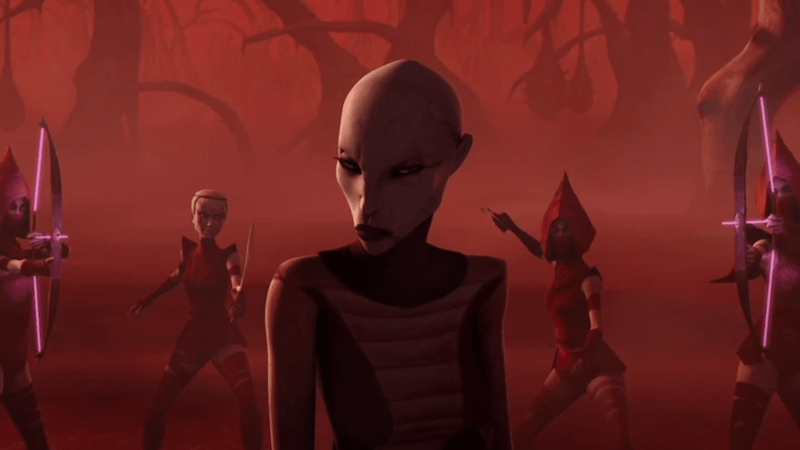What Is A Dark Jedi?
Image Source: Star Wars
There are plenty of different groups who hold beliefs regarding the Force within the Star Wars universe. The Jedi Order is one such group, as are the Sith. When a trained Force user who subscribed to the Jedi Order strays from and rejects the light, they aren’t inherently Sith; they slide into the dark side, but their grouping can be something separate on its own. This Force user in question may be a Dark Jedi.
You may not have heard of a Dark Jedi before, or if you have, then it’s been a while since you came across the term. The title “Dark Jedi” has its origins in Legends, specifically the 1991 novel Heir to the Empire written by Timothy Zahn. The term Sith, while in published existence by the novel’s release, was not as common and popularized. As a result, non-Jedi needed a name to better differentiate themselves from the light. Since then, the Dark Jedi have evolved into their own classification, notating a specific difference observable in dark-side-leaning Force users.
Image Source: Star Wars
RELATED:
To reiterate, a Dark Jedi and a Sith are very different. The Sith Order is its own religion and group, the antithesis of the Jedi Order. They have their own specific beliefs, rules, and traditions. The Dark Jedi distinctly differ from what a Sith is. A Dark Jedi does not subscribe to the Sith’s beliefs; while they both lean towards the dark side of the Force, the former focuses on self-interest and does not emphasize a specific code or organization network. There could be instances where a Dark Jedi sides with a Sith, however, this does not inherently make them the same thing.
Whether or not a Dark Jedi must be a former member of the Jedi Order has been a historical point of contention within the fandom. Leland Chee, the Lucasfilm employee in charge of maintaining the Holocron continuity database, chimed into the debate in 2005. He reportedly confirmed that “anyone who practices the dark side of the Force whether or not they were a former Jedi” would be considered a Dark Jedi. Yes, this still differentiates them from the Sith, since a Sith subscribes to a very specific code and set of beliefs.
One of the most famous examples of a Force user who could be considered a Dark Jedi is Asajj Ventress. She learned the ways of the Force and a bit of the Order’s values from a Jedi Knight at a young age, working with him to handle the violent attacks targeting a planet. When this Knight was killed, Ventress embraced the darker emotions within herself. While serving as an apprentice to Count Dooku, Ventress was not welcomed into the Sith Order; rather, she started as a secret and was kept at a distance. Ventress focused on the darker side of the Force but did not subscribe to the Sith religion. Whether she would still be considered a Dark Jedi following the disownment from Dooku and the death of the Nightsisters is debatable, and while it is absolutely deniable following her supposed death in the novel Dark Disciple (2015), she could easily be considered one at times.
So why should you care about Dark Jedi when it’s a concept from Legends nestled in a massive universe? It adds variety to what an organic being can be within Star Wars. A Gray Jedi doesn’t subscribe to the dark side nor the Council’s light side adherence; they walk a line between the two. A Light Jedi, or more simply, a Jedi follows the light and rejects the dark side. A Sith follows a specific religion that specializes in the dark side of the Force. There is no easy term equivalent that classifies someone the way that the label Dark Jedi specifies; it adds value to the Universe when considering this interpretation of Force users. Whether the term will make a solid return in Canon remains to be seen, but it has potential.
READ NEXT:















